According to one famous linguist, what makes humans special is our ability to deal in recursion.
To take different clauses or concepts and nest them within each other like Russian dolls.
And from these beautiful, simple, recursive mergings spring near-infinite forms of expression.
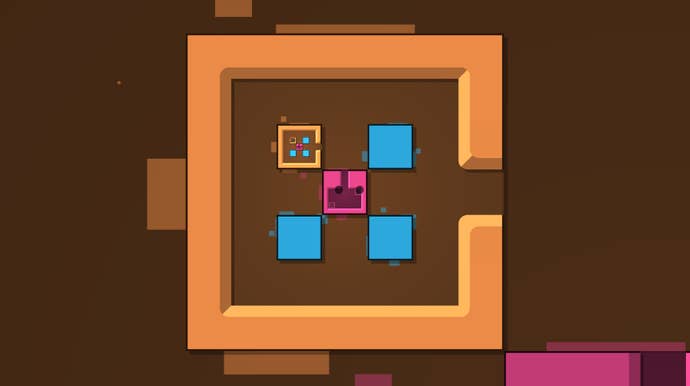
Anyway, whether or not recursion is the essence of the human mind, itisfun to mess about with.
Patrick’s Parabox review
If you haven’t, you should try.
Take a photo of yourself holding a photo of yourself holding a photo of yourself.

Or turn your webcam towards the screen and watch the picture loop in on itself in a never-ending spiral.
The presentation is cute but basic and, dare I say it, sometimes unpolished.
The UI isn’t mousable and the menus are busy.

The background music has good vibes, but loops too soon and chafes in long play sessions.
Also, the game is named after its creator.
Developer: Patrick Traynor.

Publisher: Patrick Traynor.'
That’s impressive, certainly, and fittingly recursive, but a touch egoistic for my taste.
I’m here for the puzzles, not the person.

So, you guide little Patrick around a box.
And the goal is simple.
You have to push boxes into marked-out spaces.

Then you have to put Patrick himself into his own marked-out space.
Then the level is done.
If boxes are the first puzzle ingredient, walls are the second.
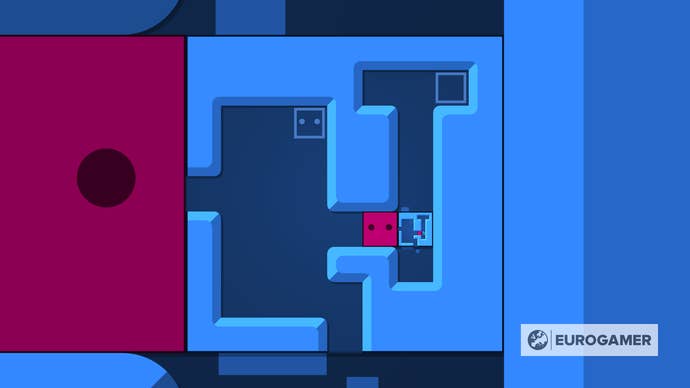
When you push a box against a wall, it stops.
you’ve got the option to use the resistance of a wall to wedge one box inside another.
Or sometimes inside itself - we’ll get to that.
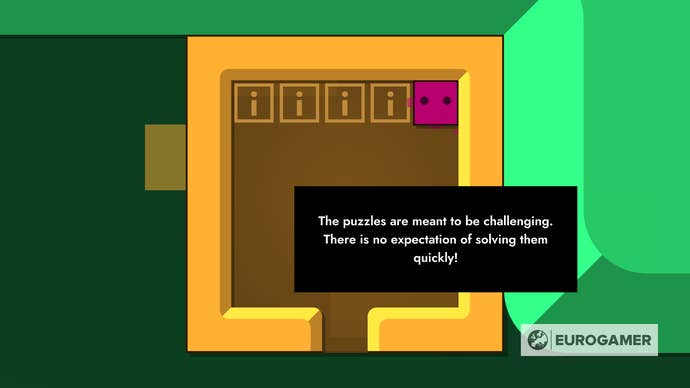
Walls are essential tools, but they’re also hazards.
Push a box against a flat wall and it’s stuck on one axis.
Push one into a corner and it’s stuck completely.
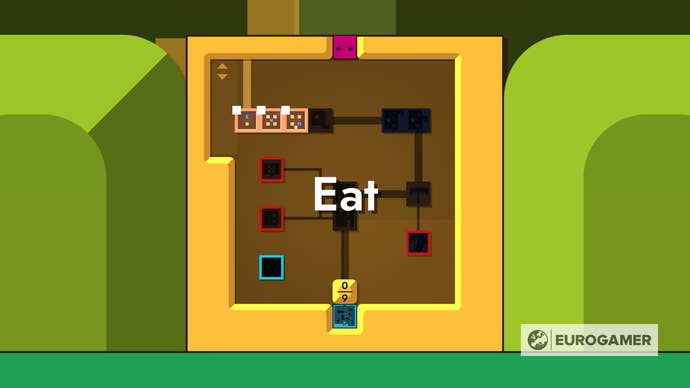
And if you make a complete mess, one button will reset everything in an instant.
So far, so simple.
But here’s where it gets trippy.

Sometimes these boxes are nested within themselves recursively.
it’s possible for you to dive infinite-floors-deep into these boxes.
It’s only slightly less mind-bending than it sounds.

And with just a few more simple mechanics, things get very weird indeed.
The game is split into twenty-ish worlds, each of them, fittingly, a box within a box.
Each introduces its own little twist or complication, with twenty-ish levels that riff on this concept.
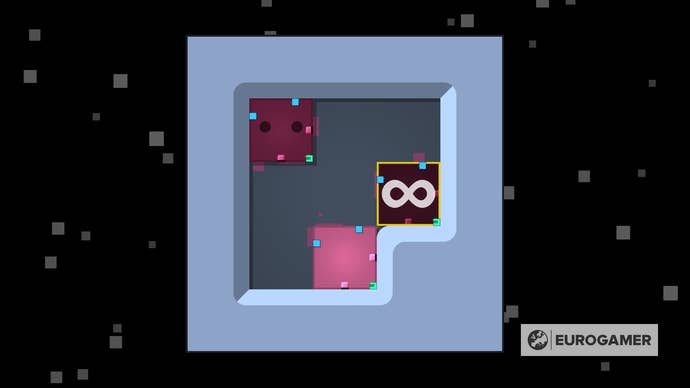
One world has a mirroring mechanic, where the box-within-a-box is flipped.
Another has you pushing long lines of boxes into themselves in an infinite recursive parade.
With a concept as mind-twisting as recursion, a game risks being scuppered by its own creativity.
Too much complexity, too much stuff to remember or too much brute force trial and error.
But Patrick’s Parabox is a masterclass in simplicity, tempo and guided learning.
Except for one room with some useful tooltips, there’s no tutorial.
Sometimes it’s too minimalist.
It took me longer than I should admit to find the level select screen.
But mostly it’s spot on.
The balance is also faultless.
And these basic levels are all perfectly pitched and paced.
Even for someone with a wandering attention span, they’re morish, and captivating and never monotonous.
By the last few stages I was nodding along, muttering ‘Brilliant!’
The harder levels, demarcated with thick red borders, are optional.
They take ideas from the basic levels and get twisted with them.
Some are proper tough.
That can be a good thing.
With trial and error and a bit of lateral thinking, the solution arrives and you feel like Einstein.
Other times it’s maddening.
If stuck, it’s easy to move on, and the game never belittles you for failure.
Coming from the untempered sadism ofElden Ring, it’s a welcome breather.
My experience with Patrick’s Parabox, then, was itself nested like a Russian doll.
Looking at the outer layer, I wasn’t sold.
Yet another nondescript puzzler in a sea of hundreds, with some style but a few rough edges.
One layer deeper it started to click.
Okay, this is fun.
By the last few stages, though, I was nodding along, muttering ‘Brilliant!’
The game is generous with optional content.
Three-hundred plus levels and tools for the community to develop more.
It’s the best I’ve played in ages.
It has all the inventive spark I’d expect of Nintendo EAD.
Tripley impressive from a young, independent, two-person development collaboration.